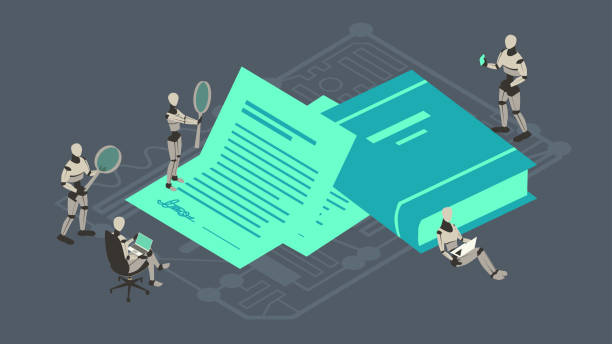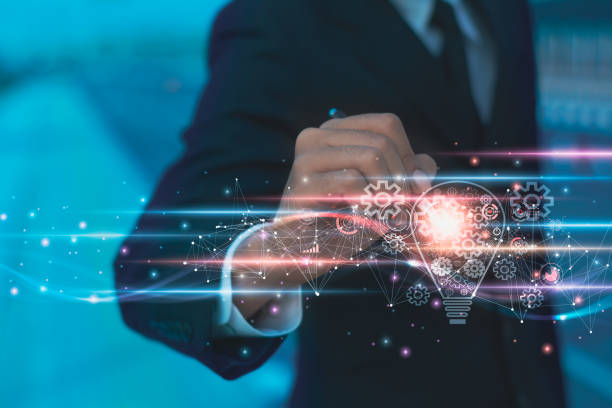Introduction
The practice of patent law, traditionally characterized by meticulous research, extensive documentation, and complex legal analysis, is undergoing a transformative shift with the advent of automation. As technology continues to advance, legal professionals in the field of intellectual property are harnessing the power of automation to streamline processes, enhance efficiency, and revolutionize the way patents are searched, analyzed, and prosecuted. In this comprehensive exploration, we delve into the multifaceted ways in which automation is redefining patent law practices, examining the benefits, challenges, and the overarching impact on the legal profession.

Evolution of Patent Law Practices
Traditional Challenges in Patent Law
Patent law practices have long grappled with challenges such as the time-consuming nature of manual patent searches, the complexity of patent prosecution, and the need for exhaustive analysis to ensure the novelty and inventiveness of an idea. Legal professionals spent hours sifting through extensive databases, researching prior art, and navigating intricate legal frameworks to secure patents for their clients. This traditional approach, while thorough, often resulted in lengthy timelines and increased costs associated with patent prosecution.
The Emergence of Automation
The integration of automation in patent law practices marks a pivotal turning point. Automation technologies, including Artificial Intelligence (AI), machine learning, and advanced data analytics, are revolutionizing every stage of the patent lifecycle. From the initial patent search to the prosecution process and ongoing portfolio management, automation is streamlining workflows and enabling legal professionals to focus on higher-value tasks that require human expertise.
Uses of AI in Law Practices
Artificial Intelligence (AI) is revolutionizing the legal landscape, transforming traditional law practices and enhancing efficiency across various domains. From automating routine tasks to providing advanced analytics and decision support, the uses of AI in law practices are diverse and impactful. Here’s a comprehensive exploration of the key applications of AI in the legal field:
Legal Research and Document Review
AI-powered tools have become invaluable for legal research and document review. Natural Language Processing (NLP) algorithms can sift through vast databases of legal documents, statutes, and case law to provide relevant information quickly and accurately. This expedites the research process, allowing legal professionals to focus on more strategic aspects of their work.
Contract Review and Management
AI is transforming the way contracts are reviewed and managed. Machine learning algorithms can analyze contracts, identify key clauses, and extract relevant information, streamlining due diligence processes. Additionally, AI tools can assist in contract management by automating the tracking of key dates, obligations, and compliance requirements.
Predictive Analytics for Case Outcomes
AI is increasingly used for predictive analytics in legal practices. By analyzing historical case data and legal precedents, machine learning algorithms can predict likely case outcomes. This enables lawyers to make more informed decisions, assess risks, and develop effective legal strategies based on data-driven insights.
Legal Analytics and Data Visualization
AI-driven legal analytics tools provide lawyers with the ability to gain deeper insights into case data, trends, and patterns. Data visualization techniques help transform complex legal information into easily understandable graphics, aiding lawyers in presenting compelling arguments, identifying strengths and weaknesses in a case, and making more informed decisions.
E-Discovery and Due Diligence
AI plays a crucial role in e-discovery, helping legal professionals efficiently sift through large volumes of electronic documents during litigation. Machine learning algorithms can identify relevant documents, classify them, and prioritize their relevance, significantly reducing the time and costs associated with the discovery process. This is particularly beneficial in complex litigation cases and due diligence exercises.
Virtual Legal Assistants and Chatbots
The integration of virtual legal assistants and chatbots powered by AI has enhanced client interactions and improved the efficiency of law firms. These AI-driven tools can handle routine client inquiries, schedule appointments, and provide basic legal information, allowing legal professionals to focus on more complex tasks that require human expertise.
Compliance Monitoring and Regulatory Analysis
AI is instrumental in automating compliance monitoring and regulatory analysis. Legal professionals can use AI tools to stay updated on changes in laws and regulations, ensuring that their clients remain compliant with evolving legal requirements. This proactive approach helps mitigate risks and avoid legal complications.
Intellectual Property (IP) Management
In the realm of intellectual property law, AI is revolutionizing processes such as patent searches, trademark monitoring, and copyright enforcement. Advanced algorithms can quickly analyze vast datasets, identify potential infringements, and assist in the management of IP portfolios, streamlining the protection of intellectual property rights.
Sentiment Analysis and Social Media Monitoring
AI tools can perform sentiment analysis and monitor social media for legal purposes. This is particularly relevant in areas such as reputation management and criminal investigations. By analyzing social media content and sentiment, legal professionals can gauge public opinion, identify potential legal issues, and respond strategically.
Cybersecurity and Data Protection
In an era where data breaches and cyber threats are prevalent, AI is crucial for enhancing cybersecurity in law practices. AI algorithms can detect unusual patterns, identify potential security threats, and help protect sensitive legal information. Additionally, AI is used to ensure compliance with data protection regulations and safeguard client confidentiality.
AI in Patent Search and Prior Art Analysis
A. Accelerating Patent Searches with AI
One of the significant impacts of automation in patent law is the acceleration of patent searches. AI-powered algorithms can swiftly scan vast databases, identifying relevant prior art and assessing the patentability of an invention with remarkable speed and accuracy. This not only expedites the patent search process but also ensures that legal professionals have access to a more comprehensive pool of information to make informed decisions.
B. Predictive Analytics for Patent Prosecution
Automation extends to predictive analytics, where AI algorithms analyze historical data on patent office decisions to predict the likelihood of success in obtaining a patent. This data-driven approach empowers legal professionals with insights into potential challenges and informs strategic decisions during the patent prosecution process. The result is a more efficient and informed approach to securing patents for inventors and businesses.
C. Automated Drafting of Patent Applications
Automation is reshaping the way patent applications are drafted. AI-powered tools can analyze technical documentation, identify key elements of an invention, and assist legal professionals in generating comprehensive patent applications. This not only reduces the time and effort required for drafting but also enhances the accuracy of patent applications by minimizing errors and ensuring adherence to patent office guidelines.
D. Enhanced Collaboration Between Humans and Automation
The synergy between legal professionals and automated tools is crucial in patent prosecution. While automation streamlines many aspects of the process, human expertise remains indispensable for legal interpretation, strategy formulation, and addressing unique challenges that may arise during patent examination. The collaborative approach ensures a balance between efficiency and the nuanced decision-making required in patent law.
The uses of AI in law practices are diverse and continually expanding, ushering in a new era of efficiency, data-driven decision-making, and enhanced client services. As legal professionals embrace AI technologies, they gain the ability to focus on higher-level strategic tasks, deliver more accurate and timely legal services, and navigate the complexities of the legal landscape with greater agility. The integration of AI is not about replacing human expertise but rather augmenting it, paving the way for a future where lawyers and AI work collaboratively to achieve optimal outcomes in legal practices.

Challenges and Ethical Considerations
Addressing Bias in AI Algorithms
As automation takes center stage, addressing the potential biases in AI algorithms becomes a critical consideration. AI systems learn from historical data, and if that data contains biases, the algorithms may perpetuate and even amplify these biases. In the context of patent law, biased algorithms could lead to inequitable outcomes in patent examination and grant processes. Legal professionals must actively engage in ongoing efforts to identify and rectify biases in AI systems to uphold the principles of fairness and justice in patent law.
Ensuring Data Privacy and Security
The automation of patent law practices involves the processing and analysis of vast amounts of sensitive information. Legal professionals must navigate the complex landscape of data privacy and security to ensure compliance with regulations and safeguard confidential client information. Establishing robust cybersecurity measures and adhering to privacy standards are imperative to maintain trust in the use of automation in patent law.
The Future Landscape of Automation in Patent Law
Integration of Blockchain Technology
The future of automation in patent law may see the integration of blockchain technology to enhance data security, transparency, and the integrity of patent records. Blockchain can provide a decentralized and tamper-proof ledger for patent-related information, reducing the risk of fraud, ensuring the authenticity of patent documents, and facilitating more secure transactions related to intellectual property.
Advancements in Natural Language Processing (NLP)
Continued advancements in Natural Language Processing (NLP) will further refine the ability of automation tools to understand and process human language. This can significantly improve the efficiency of patent searches, increase the accuracy of prior art analysis, and enhance the drafting of patent applications by enabling AI systems to comprehend complex technical language with greater precision.
Collaboration Platforms for Global Patent Practices
Automation is likely to facilitate enhanced collaboration on a global scale. Cloud-based platforms and collaborative tools powered by automation will enable legal professionals from different jurisdictions to collaborate seamlessly on patent-related matters. This interconnected approach can foster innovation by leveraging diverse expertise and perspectives from around the world.
Conclusion
The integration of automation into patent law practices represents a paradigm shift, offering legal professionals unprecedented tools to navigate the complexities of intellectual property. From expediting patent searches and enhancing the efficiency of patent prosecution to reshaping the way patent applications are drafted, automation is streamlining workflows and transforming traditional approaches. While challenges such as bias in AI algorithms and data privacy concerns demand ongoing attention, the overall impact of automation in patent law is a positive force that empowers legal professionals, accelerates innovation, and ensures a more dynamic and responsive legal landscape. As we embrace the era of automated patent law practices, a collaborative and ethically informed approach will be essential to harness the full potential of automation while upholding the principles of justice, fairness, and the protection of intellectual property rights.

